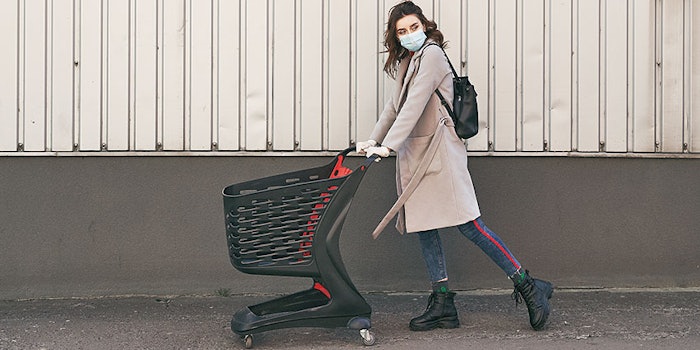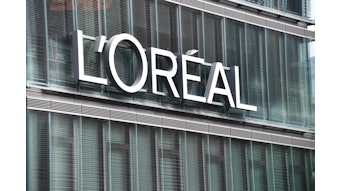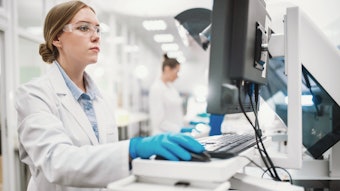
Read this article in its entirety in the May 2020 digital edition. . .
The past several weeks have found many of us sheltering in place with socially distant, home office views of the unfolding COVID-19 crisis. Sadness over lives lost, fear as the numbers rise and confusion as to what to do next are ubiquitous. It’s from behind dialed-in video chats where colleagues and I, along with market analysts, have observed shifts in personal care product demands. Here are some I’ve collected so far. Following these insights, industry experts describe how businesses have been impacted—and how they are adapting to a new reality.
Nature’s Defenses
Natural extracts tend to exhibit antimicrobial and antibacterial properties, thanks to innate plant defenses. Importantly, they are not officially approved for these uses by most regulatory bodies. These ingredients have been leveraged for skin care activities, for fragrancing effects, as alternative preservatives and more.
But according to suppliers, demand for them has moved beyond the virtue of their natural origin; natural products consumers are now Googling which of these extracts and oils have effective antiseptic and antibacterial benefits. This may also be due, in part, to a shortage of approved hand sanitizers—in fact, “hand sanitizer for sale” came up as the #7 top-searched Google term at the time this was written (April 2, 2020).
Barrier Impact
Society has also been profusely washing hands and sanitizing them. This can clearly impact the skin barrier, requiring additional humectants, moisturizers, emollients and the like to protect against or replenish moisture loss, dryness and cracking.
In turn, this will no doubt give a boost to dermatological, prescription-strength and doctor brand skin care, since we’re compromising skin with every wash and rinse. It will also put a focus on effective, milder skin cleansing. After all is said and done, one might even expect to see a global rise in compromised skin conditions, itch, irritation and sensitivity; good thing the industry has ingredients to address these.
From Color to Care
In relation, cosmetic ingredient suppliers are focused on anti-irritants, skin protectants and preservative-minimizing ingredients. These care for and prevent further sensitization and irritation of frequently washed skin, as well as skin shielded beneath face masks for long periods of time. Indeed, as we recently reported,1 South Korean beauty brands have moved away from trendy liquid-to-powder color foundations and lipsticks and toward skin care; sales in these color categories plummeted 30% between February 2019 and 2020, whereas skin care saw a 50% boost over the same time period. At least one manufacturer has even featured products to address the effects of wearing masks all day; i.e., long-wear and sweatproof options, almost in alignment with athleisure products.
Accepting Synthetics?
With a heavy focus on hygiene and protecting loved ones, consumer acceptance for synthetic materials with proven efficacy is also expected to climb. This could mean ingredients once shamed from “clean” beauty labels will finally find their time to shine. The conversations I’ve had suggest a good explanation of the science, plus a proven safety record, may finally gain a foothold with consumers stronger than their previously held, misinformed beliefs. (So maybe, just maybe, they’ll hear you now.)
At-home and Self Care
Perhaps most unexpected, although hindsight is 20/20, is the rise in purchases of at-home hair coloring and DIY spa treatment-type products. In fact, as CBSNews reported2 on March 27, 2020, sales of the Madison Reed brand at-home hair coloring kits spiked by 750% (that’s not a typo) within just a few days. This should come as no surprise, with stay-in-place sheltering orders and social distancing measures in place.
In relation, according to a report published by IRI,3 the idea of self-care has become more mainstream during the pandemic. The main drivers include: self-image (i.e., an increased social media presence), convenience, lower health care costs, aging, illness prevention and stress reduction.
In numeric terms, IRI underlines: immunity products saw increases of 124.9% in buyers and 34.2% in spending; hand sanitizers, increases of 107.3% in buyers and 103.3% in spending; liquid hand soap, increases of 97.3% in buyers and 29.3% in spending; and toothpaste, increases of 22.7% in buyers and 8.8% in spending. Once the United States emerges from the COVID-19 outbreak, IRI predicts this increased focus on self-care will become the new norm.
TBD: Skin Microbiome, Reusable Packaging
Finally, it remains to be seen where the skin microbiome and reusable packaging will fall into the COVID-19 flux. This situation could give rise to a major boost in microbiome care products—and better skin health, after all that the skin’s been subjected to.
In fact, in a recent conversation, one expert proposed that microbiome care could become even more important at night, i.e., to allow the skin time to recuperate from sanitizing and washing all day. During the day, however, it makes less sense because there is not time between washes for the microbiome to normalize again.
The idea of reusable packaging, as we recently reported,4 was to omit excessive waste, rebuild package components for easier recycling, and to refill containers at a point-of-purchase location as the products are needed. It was just starting to catch on, too, but in light of the contagion we’re facing, it will no doubt raise concerns over safety, hygiene and cross-contamination, among others. This is not to mention the “necessary evil” we’ve created with excessive waste from packaging and sealing products to ensure they are sterile and medically safe for consumer use.
There’s an unknown road ahead of us with unpredictable twists and turns in the face of this global crisis. But we can start with where we are to figure out where to go. The following experts shared their stories, insights and strategies, which could help to inform our industry’s future direction.
Global Nation Shutdowns
Shaheen Majeed, president worldwide of Sabinsa Cosmetics, reports that after a nationwide, 21-day lock-down was declared in India on March 25, 2020, Sabinsa was able to keep manufacturing facilities up and running, and employees safe. He writes, “Materials are shipping to our warehouses around the world. [And] in the U.S, our operations in New Jersey and Utah are considered essential critical infrastructure under the Homeland Securities Act, so day-to-day business has continued without much disruption. That said, we’ve had to implement some new and varied strategies for added and required safety, and modify production schedules. We’ve [also] experienced heightened demand for some ingredients.”
Staggered shifts and prioritization: What actions were taken to adapt to the new reality? “In our manufacturing, laboratory, warehousing and distribution facilities, we’ve incorporated new protocols for employee safety, including staggered shifts for physical distancing,” Majeed notes. “We’re currently giving priority attention to manufacturing the ingredients where demand has significantly surged, specifically curcumin and others associated with supporting immune health.
“Our sales team members, across the globe in the U.S., Australia, Canada, China, Germany, Japan, India, Poland, South Africa, South Korea and Vietnam are working remotely wherever possible and focused on checking in on and ensuring our customers are informed and reassured.”
Employee credentials and moving supply: As far as growing pains area considered, Majeed shares, “We’re all dealing with unprecedented events. While the measures many governments have taken have inherent challenges to continuity of operations, we know they are right and necessary. So we adapt. We quickly learned how to get proper credentials in place for our employees to report to work, so our manufacturing facilities are staffed and running. We got extra material onto the water and into the air prior to shutdowns, even with only a few hours’ window to do so. Unfortunately, current sea shipment rates have doubled and air freight quadrupled, so these expenses will be costly for us, as for everyone.”
Toward the greater good: What’s the best way forward from here? Majeed writes, “No one in living memory has dealt with a crisis on this scale but we come from a tradition, ayurveda, that takes a long-term view. It’s true we’re all navigating unchartered territory, uncertain by its very nature, but I’m confident we’ll make it through by working together.
“We must heed government requirements and medical expert recommendations put in place to safeguard the greater community. In business relationships, good communication can minimize uncertainty. Philosophically, I hope everyone around the world is inspired to transform, for the better, all the areas of vulnerability and inequity highlighted by this crisis.”
. . .Read more in the May 2020 digital edition. . .
References
- Latimer, A. (2020, Mar 30). Makeup brands respond to influx of face masks. https://www.cosmeticsandtoiletries.com/formulating/category/color/Makeup-Brands-Respond-to-Influx-of-Face-Masks-569225571.html
- CBS DFW (2020, Mar 27). Hair-dye kit sales soar as COVID-19 cuts off at-home workers from salons. https://dfw.cbslocal.com/2020/03/27/hair-dye-kit-sales-covid-19-at-home-workers-salons/
- IRI (2020, Apr 3). COVID-19 and the Economy. Tracking the dramatic pivot of the U.S. consumer and shopper behavior. https://www.iriworldwide.com/iri/media/library/covid-19-thought-leadership-4-3-2020.pdf
- Chidley, J. (2020, Feb 28). Industry insight: Sustainability from the outside in, putting packaging first. https://www.cosmeticsandtoiletries.com/marketdata/Industry-Insight--568284541.html











